Citation for global burden of disease vizualization information
Home » Trending » Citation for global burden of disease vizualization informationYour Citation for global burden of disease vizualization images are available in this site. Citation for global burden of disease vizualization are a topic that is being searched for and liked by netizens today. You can Download the Citation for global burden of disease vizualization files here. Download all royalty-free photos and vectors.
If you’re looking for citation for global burden of disease vizualization images information related to the citation for global burden of disease vizualization interest, you have come to the ideal blog. Our website frequently gives you hints for downloading the highest quality video and picture content, please kindly search and locate more informative video content and images that match your interests.
Citation For Global Burden Of Disease Vizualization. The global burden of disease study 2019 (gbd 2019), coordinated by the institute for health metrics and evaluation (ihme), estimated the burden of diseases, injuries, and risk factors for 195 countries and territories, and at the subnational level for a subset of countries. The global distribution of the disease burden. Gbd studies included 204 countries and territories that were classified into 21 regions according to epidemiological similarities and geographical proximity, and into five. Compare causes, injuries, and risks within a country, compare countries with regions or the world, and explore patterns and trends by country, age, and gender.
 (PDF) Estimation of the global prevalence of dementia in From researchgate.net
(PDF) Estimation of the global prevalence of dementia in From researchgate.net
The global burden of disease study 2016 (gbd 2016), coordinated by the institute for health metrics and evaluation (ihme), estimated the burden of diseases, injuries, and risk factors for 195 countries and territories and at the subnational level for a subset of countries. Institute for health metrics and evaluation (ihme). The global distribution of the disease burden. Look through the various data visualizations and experiment with the filters to adjust parameters within each individual tool. The united nations established, in september 2015, the sustainable development goals (sdgs), which specify 17 universal goals, 169 targets, and 232. Analyze updated data about the world’s health levels and trends from 1990 to 2019 in this interactive tool using estimates from the global burden of disease (gbd) study.
This reference life table is used in gbd to calculate years of.
The global burden of disease study 2019 (gbd 2019), coordinated by the institute for health metrics and evaluation (ihme), estimated the burden of diseases, injuries, and risk factors for 195 countries and territories, and at the subnational level for a subset of countries. Citation for gbd compare visualizations. A comprehensive demographic analysis for the global burden of disease. This reference life table is used in gbd to calculate years of. The global burden of disease (gbd) study is the most comprehensive worldwide observational epidemiological study to date. Look through the various data visualizations and experiment with the filters to adjust parameters within each individual tool.
 Source: healthdata.org
Source: healthdata.org
Led by the institute for health metrics and evaluation (ihme) at the university of washington, seattle (usa) the gbd study. The global burden of disease study 2017 (gbd 2017), coordinated by the institute for health metrics and evaluation (ihme), estimated the burden of diseases, injuries, and risk factors from 1990 to 2017. The present study applied bibliometric analysis and citespace visualization to analyze global trends and research focus areas on perioperative care for the elderly between 1991 and 2020. The global burden of disease study 2016 (gbd 2016), coordinated by the institute for health metrics and evaluation (ihme), estimated the burden of diseases, injuries, and risk factors for 195 countries and territories and at the subnational level for a subset of countries. In 2015, the world health organization (who) foodborne disease burden epidemiology reference group (ferg) published the world’s first estimates of the global and regional incidence and burden of foodborne disease (fbd).
 Source: healthdata.org
Source: healthdata.org
The global distribution of the disease burden. The present study applied bibliometric analysis and citespace visualization to analyze global trends and research focus areas on perioperative care for the elderly between 1991 and 2020. A comprehensive demographic analysis for the global burden of disease. This research estimated that in 2010, 31 major foodborne hazards resulted in over 600 million illnesses and 420,000 deaths. Ihme, university of washington, 2015.
 Source: researchgate.net
Source: researchgate.net
The united nations established, in september 2015, the sustainable development goals (sdgs), which specify 17 universal goals, 169 targets, and 232. The global burden of disease study 2016 (gbd 2016), coordinated by the institute for health metrics and evaluation (ihme), estimated the burden of diseases, injuries, and risk factors for 195 countries and territories and at the subnational level for a subset of countries. Estimates for deaths, ylls, ylds, and dalys attributable to 79 risk. Compare causes, injuries, and risks within a country, compare countries with regions or the world, and explore patterns and trends by country, age, and gender. We see that rates across the regions with the best health are below 20,000 dalys per 100,000 individuals.
 Source: researchgate.net
Source: researchgate.net
This map shows dalys per 100,000 people of the population. Compare causes, injuries, and risks within a country, compare countries with regions or the world, and explore patterns and trends by country, age, and gender. The global burden of disease study 2016 (gbd 2016), coordinated by the institute for health metrics and evaluation (ihme), estimated the burden of diseases, injuries, and risk factors for 195 countries and territories and at the subnational level for a subset of countries. Analyze updated data about the world’s health levels and trends from 1990 to 2019 in this interactive tool using estimates from the global burden of disease (gbd) study. Compare causes, injuries, and risks within a country, compare countries with regions or the world, and explore patterns and trends by country, age, and gender.
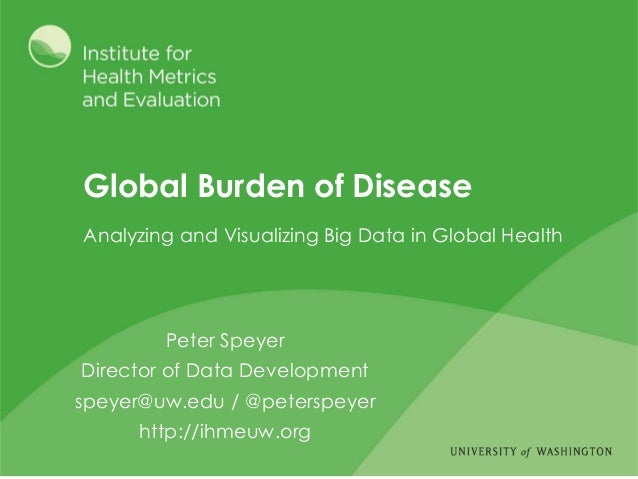 Source: slideshare.net
Source: slideshare.net
Compare causes, injuries, and risks within a country, compare countries with regions or the world, and explore patterns and trends by country, age, and gender. Please use the visualization tools from the global burden of disease (gbd) study to answer the following questions. Citation for gbd compare visualizations. In 2015, the world health organization (who) foodborne disease burden epidemiology reference group (ferg) published the world’s first estimates of the global and regional incidence and burden of foodborne disease (fbd). Compare causes, injuries, and risks within a country, compare countries with regions or the world, and explore patterns and trends by country, age, and gender.
 Source: healthdata.org
Source: healthdata.org
A comprehensive demographic analysis for the global burden of disease. The present study applied bibliometric analysis and citespace visualization to analyze global trends and research focus areas on perioperative care for the elderly between 1991 and 2020. Analyze updated data about the world’s health levels and trends from 1990 to 2019 in this interactive tool using estimates from the global burden of disease (gbd) study. Data on the global death and disease burden attributable to apmp were obtained from the gbd 2019, which provides worldwide and comprehensive assessments of health loss for 329 diseases. The united nations established, in september 2015, the sustainable development goals (sdgs), which specify 17 universal goals, 169 targets, and 232.
 Source: researchgate.net
Source: researchgate.net
Data on the global death and disease burden attributable to apmp were obtained from the gbd 2019, which provides worldwide and comprehensive assessments of health loss for 329 diseases. The total provides the measure of hypersensitivity to sound with higher scores indicating greater sensitivity. During the study period, research output related to perioperative care for the elderly most often originated from the united states. Compare causes, injuries, and risks within a country, compare countries with regions or the world, and explore patterns and trends by country, age, and gender. The global distribution of the disease burden.
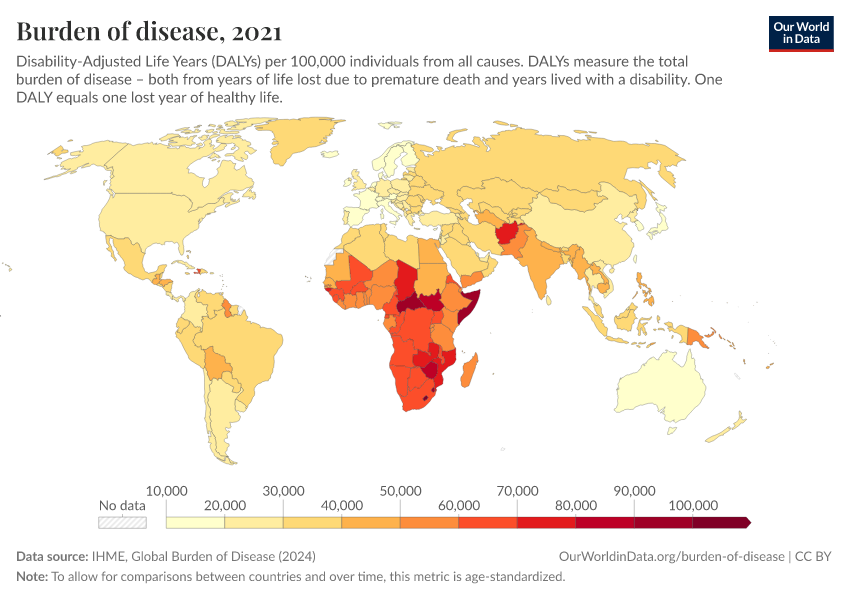 Source: ourworldindata.org
Source: ourworldindata.org
Now familiarize yourself with the available datasets. Analyze updated data about the world’s health levels and trends from 1990 to 2019 in this interactive tool using estimates from the global burden of disease (gbd) study. Compare causes, injuries, and risks within a country, compare countries with regions or the world, and explore patterns and trends by country, age, and gender. The united nations established, in september 2015, the sustainable development goals (sdgs), which specify 17 universal goals, 169 targets, and 232. This research estimated that in 2010, 31 major foodborne hazards resulted in over 600 million illnesses and 420,000 deaths.
 Source: researchgate.net
Source: researchgate.net
Compare causes, injuries, and risks within a country, compare countries with regions or the world, and explore patterns and trends by country, age, and gender. Please use the visualization tools from the global burden of disease (gbd) study to answer the following questions. The united nations established, in september 2015, the sustainable development goals (sdgs), which specify 17 universal goals, 169 targets, and 232. This reference life table is used in gbd to calculate years of. The global burden of disease (gbd) study is the most comprehensive worldwide observational epidemiological study to date.
 Source: nexightgroup.com
Source: nexightgroup.com
Compare causes, injuries, and risks within a country, compare countries with regions or the world, and explore patterns and trends by country, age, and gender. All responses should be based on the 2019 gbd estimates. Compare causes, injuries, and risks within a country, compare countries with regions or the world, and explore patterns and trends by country, age, and gender. Compare causes, injuries, and risks within a country, compare countries with regions or the world, and explore patterns and trends by country, age, and gender. Compare causes, injuries, and risks within a country, compare countries with regions or the world, and explore patterns and trends by country, age, and gender.
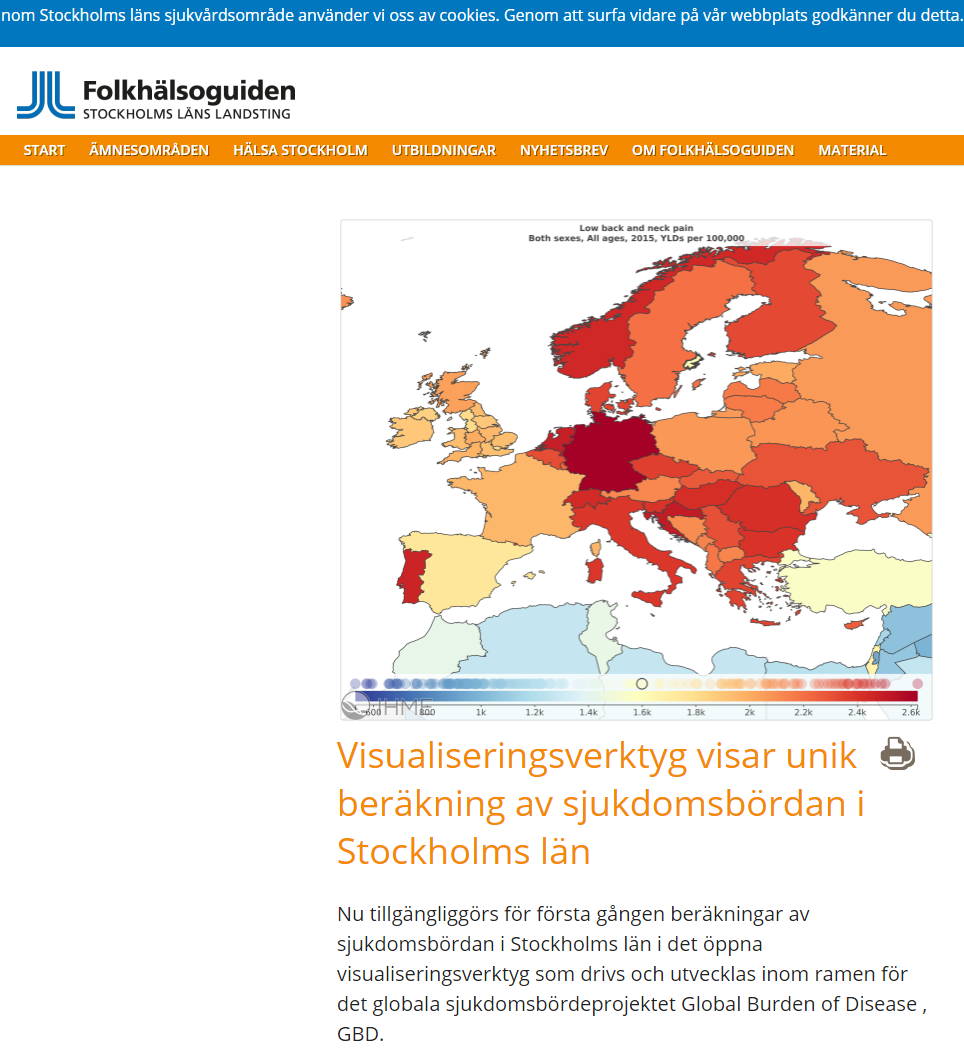 Source: healthdata.org
Source: healthdata.org
Compare causes, injuries, and risks within a country, compare countries with regions or the world, and explore patterns and trends by country, age, and gender. The global distribution of the disease burden. Institute for health metrics and evaluation (ihme). The global burden of disease study 2019 (gbd 2019), coordinated by the institute for health metrics and evaluation (ihme), estimated the burden of diseases, injuries, and risk factors for 195 countries and territories, and at the subnational level for a subset of countries. Analyze updated data about the world’s health levels and trends from 1990 to 2019 in this interactive tool using estimates from the global burden of disease (gbd) study.
 Source: pinterest.com
Source: pinterest.com
We see that rates across the regions with the best health are below 20,000 dalys per 100,000 individuals. For each answer, please also download and paste a screen shot of the. The global burden of disease study 2015 (gbd 2015), coordinated by the institute for health metrics and evaluation (ihme), estimated the burden of diseases, injuries, and risk factors at the global, regional, national, territorial, and, for a subset of countries, subnational level. Analyze updated data about the world’s health levels and trends from 1990 to 2019 in this interactive tool using estimates from the global burden of disease (gbd) study. Ihme, university of washington, 2015.
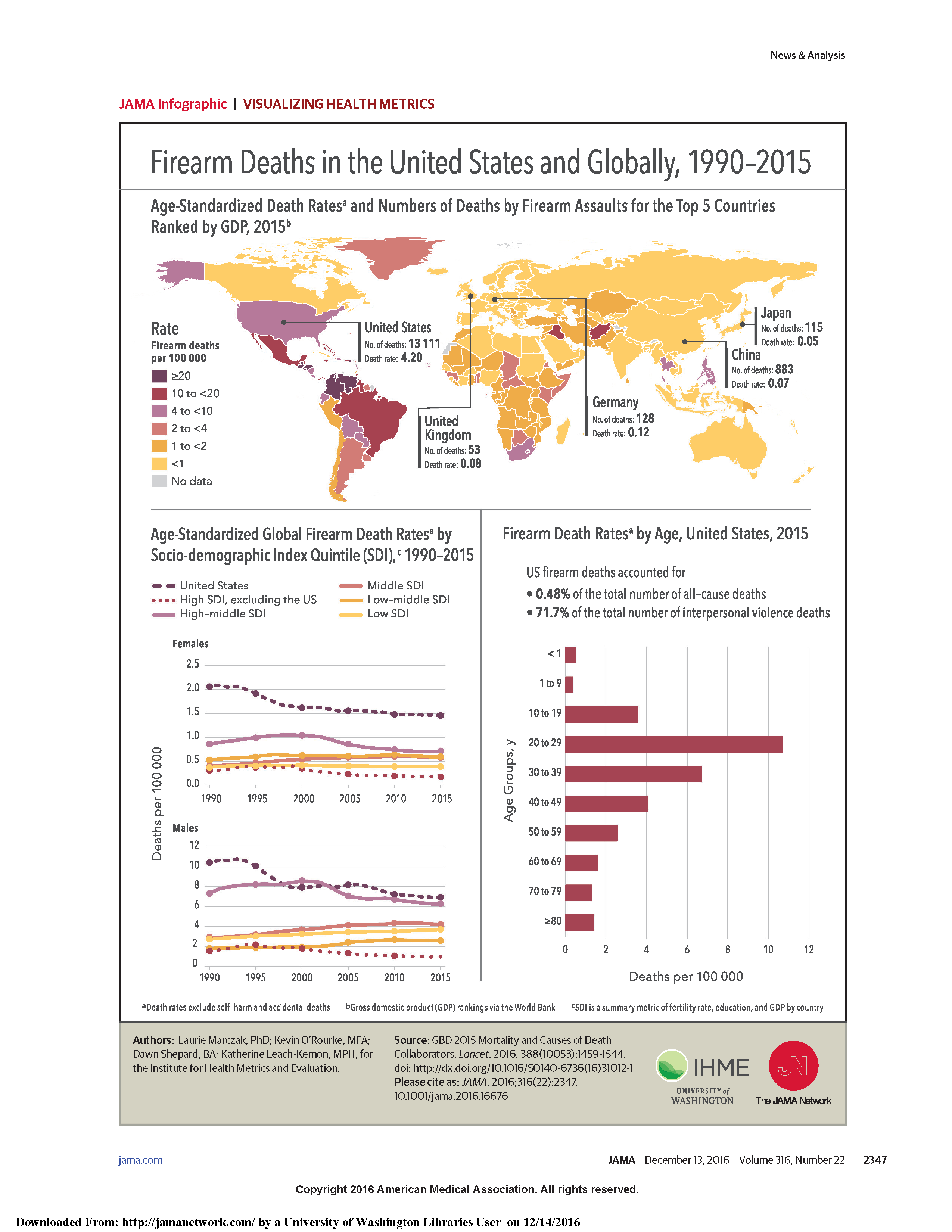 Source: healthdata.org
Source: healthdata.org
Please use the visualization tools from the global burden of disease (gbd) study to answer the following questions. The global burden of disease study 2019 (gbd 2019), coordinated by the institute for health metrics and evaluation (ihme), estimated the burden of diseases, injuries, and risk factors for 195 countries and territories, and at the subnational level for a subset of countries. Ihme, university of washington, 2015. Gbd studies included 204 countries and territories that were classified into 21 regions according to epidemiological similarities and geographical proximity, and into five. Please use the visualization tools from the global burden of disease (gbd) study to answer the following questions.
 Source: researchgate.net
Source: researchgate.net
Compare causes, injuries, and risks within a country, compare countries with regions or the world, and explore patterns and trends by country, age, and gender. The present study applied bibliometric analysis and citespace visualization to analyze global trends and research focus areas on perioperative care for the elderly between 1991 and 2020. Analyze updated data about the world’s health levels and trends from 1990 to 2019 in this interactive tool using estimates from the global burden of disease (gbd) study. Look through the various data visualizations and experiment with the filters to adjust parameters within each individual tool. The global burden of disease study 2019 (gbd 2019), coordinated by the institute for health metrics and evaluation (ihme), estimated the burden of diseases, injuries, and risk factors for 195 countries and territories, and at the subnational level for a subset of countries.
 Source: pinterest.com
Source: pinterest.com
Compare causes, injuries, and risks within a country, compare countries with regions or the world, and explore patterns and trends by country, age, and gender. Familiarize yourself with the global burden of disease 2010 site from the institute for health metrics and evaluation (see learning activities). The global burden of disease study 2017 (gbd 2017), coordinated by the institute for health metrics and evaluation (ihme), estimated the burden of diseases, injuries, and risk factors from 1990 to 2017. Ihme, university of washington, 2015. This map shows dalys per 100,000 people of the population.
 Source: healthdata.org
Source: healthdata.org
Led by the institute for health metrics and evaluation (ihme) at the university of washington, seattle (usa) the gbd study. The total provides the measure of hypersensitivity to sound with higher scores indicating greater sensitivity. Familiarize yourself with the global burden of disease 2010 site from the institute for health metrics and evaluation (see learning activities). For each answer, please also download and paste a screen shot of the. Estimates for deaths, ylls, ylds, and dalys attributable to 79 risk.
 Source: walkabilly.ca
Source: walkabilly.ca
We see that rates across the regions with the best health are below 20,000 dalys per 100,000 individuals. The maximum global score is 42 and a global score greater than 28 indicates clinically significant hyperacusis (shown in red), while a global score equal to or less than 28 indicates a negligible problem (shown in green). During the study period, research output related to perioperative care for the elderly most often originated from the united states. The global burden of disease study 2019 (gbd 2019), coordinated by the institute for health metrics and evaluation (ihme), estimated the burden of diseases, injuries, and risk factors for 195 countries and territories, and at the subnational level for a subset of countries. Gbd studies included 204 countries and territories that were classified into 21 regions according to epidemiological similarities and geographical proximity, and into five.
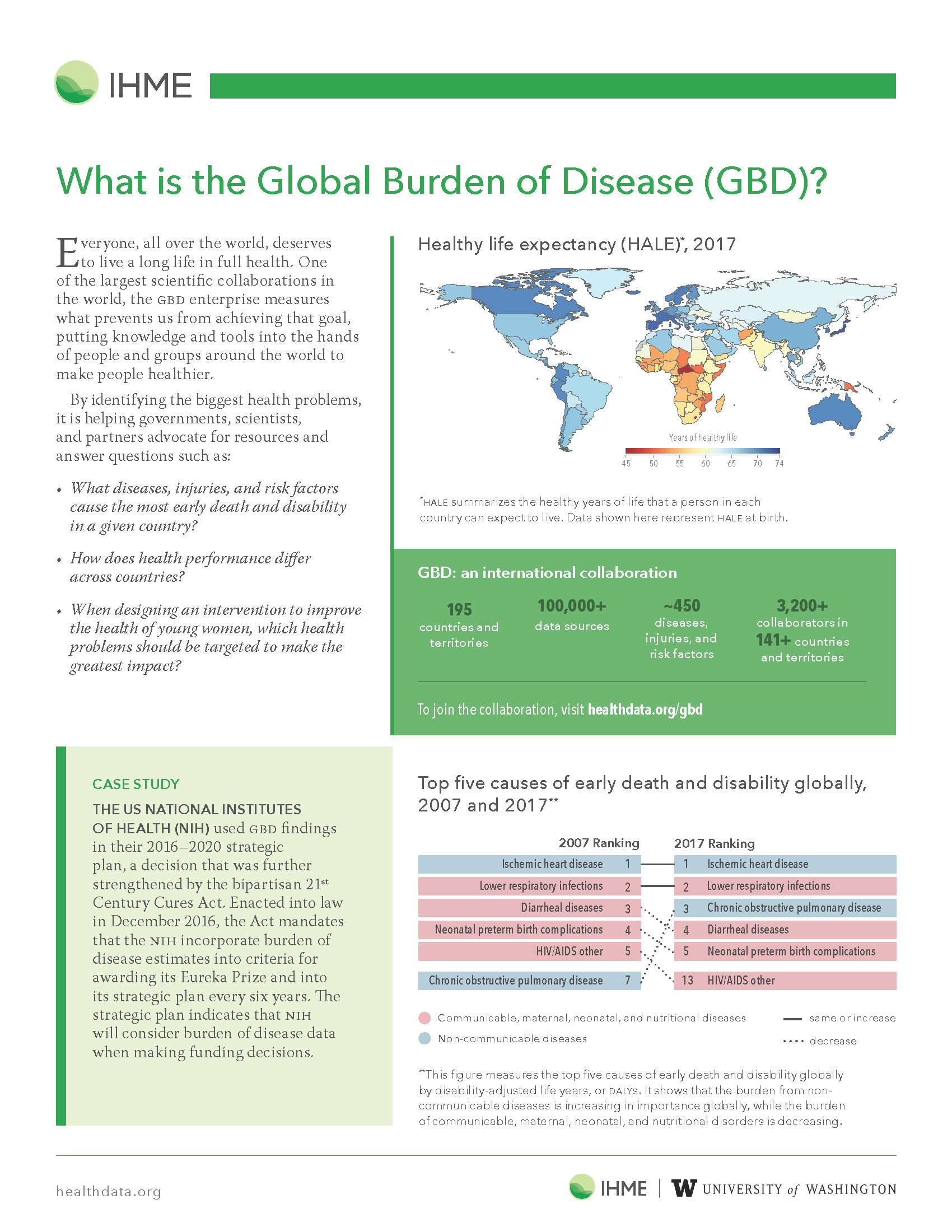 Source: healthdata.org
Source: healthdata.org
The global burden of disease study 2017 (gbd 2017), coordinated by the institute for health metrics and evaluation (ihme), estimated the burden of diseases, injuries, and risk factors from 1990 to 2017. A comprehensive demographic analysis for the global burden of disease. Compare causes, injuries, and risks within a country, compare countries with regions or the world, and explore patterns and trends by country, age, and gender. Institute for health metrics and evaluation (ihme). Ihme, university of washington, 2015.
This site is an open community for users to submit their favorite wallpapers on the internet, all images or pictures in this website are for personal wallpaper use only, it is stricly prohibited to use this wallpaper for commercial purposes, if you are the author and find this image is shared without your permission, please kindly raise a DMCA report to Us.
If you find this site adventageous, please support us by sharing this posts to your favorite social media accounts like Facebook, Instagram and so on or you can also save this blog page with the title citation for global burden of disease vizualization by using Ctrl + D for devices a laptop with a Windows operating system or Command + D for laptops with an Apple operating system. If you use a smartphone, you can also use the drawer menu of the browser you are using. Whether it’s a Windows, Mac, iOS or Android operating system, you will still be able to bookmark this website.
Category
Related By Category
- Citation eric cantona chalutier information
- Citation articles science information
- Citation 100 van harman kardon information
- Citaten verliefd op hem information
- Citation abraham lincoln politique information
- Citation coluche information
- Citation d oscar wilde sur le mariage information
- Citation collateral information
- Citation generation 2016 information
- Citation bug informatique information